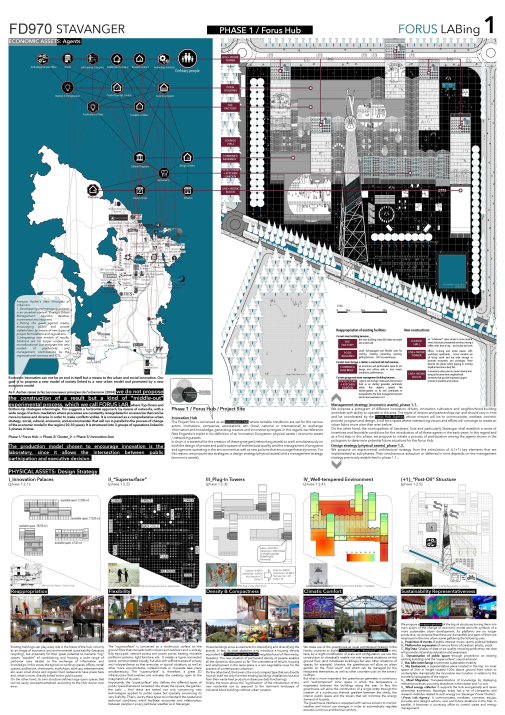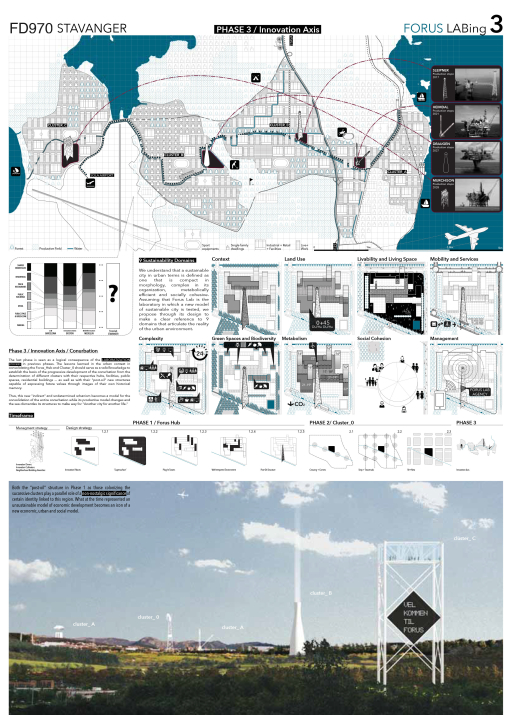Project:
Forus LABing

About
-
As F. Ascher raises in his Les nouveaux principes de l'urbanisme (2004) we do not propose the construction of a result but a kind of "middle-out" experimental process, which we call FORUS LAB, where Top-Down and Bottom-Up strategies intermingle. This suggests a horizontal approach, by means of networks, with a wide range of actors-mediators where processes are constantly renegotiated in an exercise that can be strategy -social, cultural, economic, and environmental- that will run in parallel to the process of change of the economic model in the region (20-30 years).
The production model chosen to encourage innovation is the laboratory, since it allows the intersection between public participation and executive decision.
The Project Site is conceived as an Innovation Hub where suitable conditions are set for the various actors, institutions, companies, associations, etc. (local, national or international) to exchange information and knowledge, generating creative and innovative synergies. In this regard, we reference Pete Engardio's triplet in his definition of an Innovation Ecosystem: physical assets / economic assets networking assets.
In short, it is essential for the creation of these synergies (networking assets) to work simultaneously on both the design of private and public spaces of architectural quality and the management of programs and agencies operating in the environment as well as new policies that encourage these dynamics. For this reason, we propose two strategies: a design strategy (physical assets) and a management strategy (economic assets).
-
The project brings forward ideas that are appropriate for the discussion of the project site, the larger Forus area and the region. The competitors are not proposing a final result, but a process linked to a comprehensive new urban model based on participation of many actors, considering social, cultural, economic and environmental development. The process is referred to as a “middle-out” experimental process where public participation and executive decisions intermingle in the laboratory – the Foruslab. The pilot plot as a testing ground is described in a multilayered design strategy that illustrates both reappropriation of existing structures, the use of the plot as a supersurface, and implementation of new structures. On a conurban level the project proposes clusters along an innovation axis, visually linked throughout the landscape with the use of large identifiable post-oil structures.
The jury believes that the Laboratory is an interesting process-based design management approach, whether it is a physical laboratory as shown, or not. The architects show great understanding of the complexity of the task, and all the three levels of the project – the project site, the area and the region – are interesting and thoughtfully represented. The jury is impressed with the amount of ideas and richness in the proposal, the references in relation to the academic framework and the analysis of the Forus site. The strategy on area level focuses on nodes, identified in crossings and corners, and propose reuse of vacant spaces along the new east–west axis. The jury believes this could become an operative principle for Forus. The idea that each node is marked with large-scale infrastructural icons taken from disused oil rigs makes the project also a territorial strategy that operates on the level of the landscape.
-
Team Representative: Iván Capdevila Castellanos (ES) – architect; Associate: Vicente Iborra Pallarés (ES) – architect
Contributors: José Antonio Grás Íñigo (ES), Simona Mirón (RO) – architectsPLAY studio, Plaza Calvo Sotelo 3 8A, 03001 Alicante – España
+34 965 923 392– to@playstudio.es – playstudio.es
I. Capdevila Castellanos, S. Mirón, J. A. Grás Íñigo & V. Iborra Pallarés
Team interview
1. How did you form the team for the competition?
We (Iván Capdevila and Vicente Iborra) have been working together in our own architecture office since 2005. Nowadays we are principals in PLAYstudio, an architecture practice settled in Alicante since 2010. For this competition we tried to incorporate some talented young architects like Simona and José Antonio in our team. Both of them were students at the University of Alicante, where we are also lecturers.
2. How do you define the main issue of your project, and how did you answer on this session main topic: Adaptability through Self-Organization, Sharing and/or Project (Process)?
The brief of the competition in Stavanger was asking for a very complex topic. The participants had to present a proposal for the competition site, the study area but also for the conurbation, which implied a territorial reflection for the Forus area, placed in between the Stavanger, Sola and Sadnes Municipalities. We clearly proposed a “middle-out” process, which tries to set the basis for the creation of an urban innovation area, and the starting point of this process was the competition site. We defined it as a pilot plot where we could create a new hub for the whole study area. We proposed to use 4+1 architectonic strategies –Innovation Palaces, Supersurface, Plug-in Towers, Well-tempered environment and Post-Oil Structure– there, to implement the first step of this innovation area.
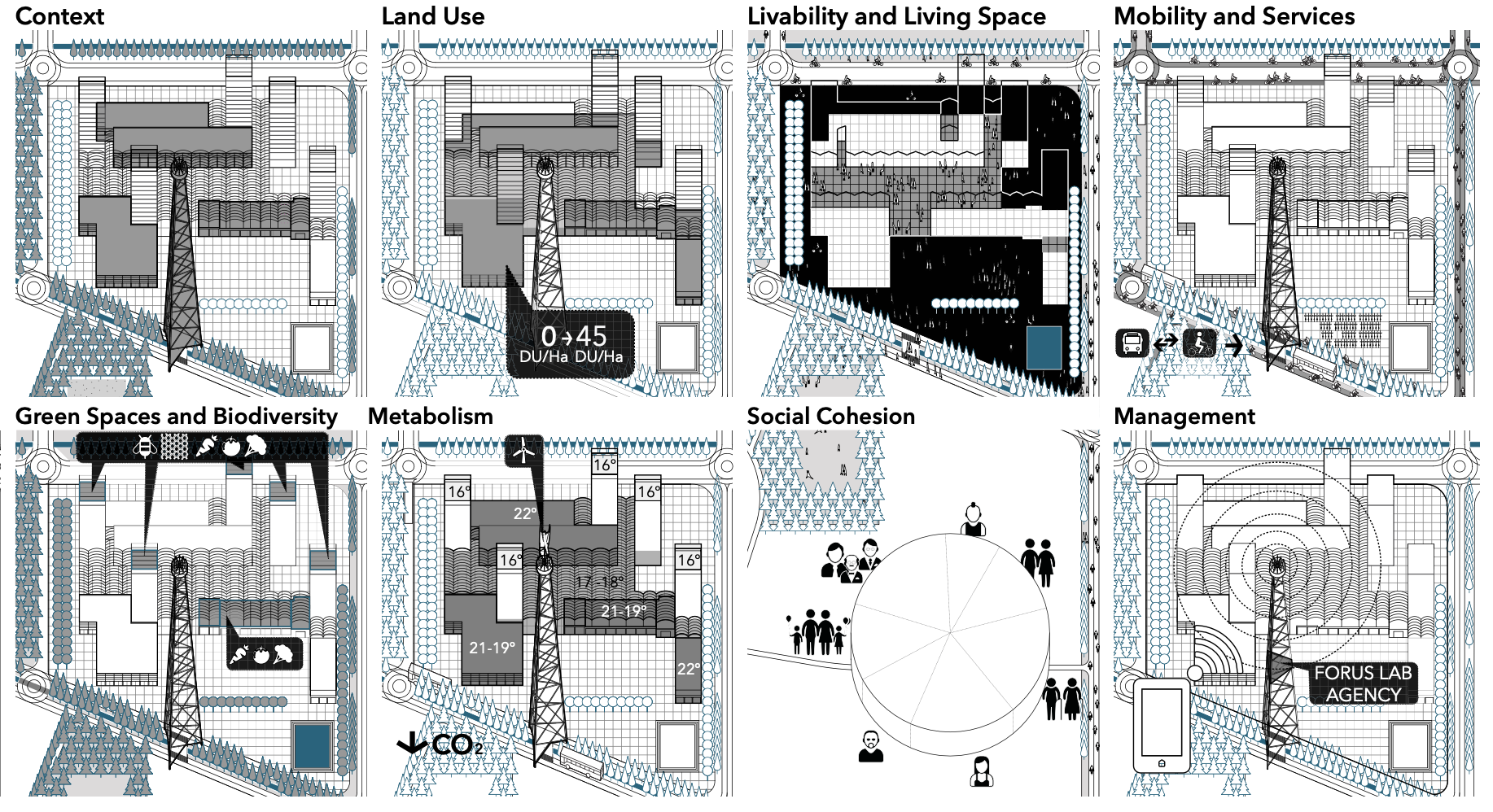
3. How did this issue and the questions raised by the site mutation meet?
As a result we proposed a new built environment on this plot where all the economic agents present, not only in Forus, but in the whole metropolitan area, could find its place in the near future. But these tasks to be developed in the new Forus Hub are just the beginning of the process. The main idea of the project is not to fix a final image but to give enough urban and architectonic tools to deal with the topic. We believe that we can learn about the results obtained in order to later on apply them both on the study area and on the conurbation, trying to create what we called the Innovation Axis.

4. Have you treated this issue previously? What were the reference projects that inspired yours?
Our proposal was clearly based on Urban Sustainability criteria, and this is a milestone in our architecture practice. We are directing the More Than Green project, a multimedia encyclopaedia of environmental, social, economic and cultural sustainability. Also our project to create the Forus Hub tried to learn both from radical projects proposed in the 1960’s by authors like Cedric Price, Archigram, Superstudio, Hans Hollein or Reyner Banham, but clearly alluded to the work developed by other contemporary authors like Ecosistema Urbano or Lacaton & Vassal.
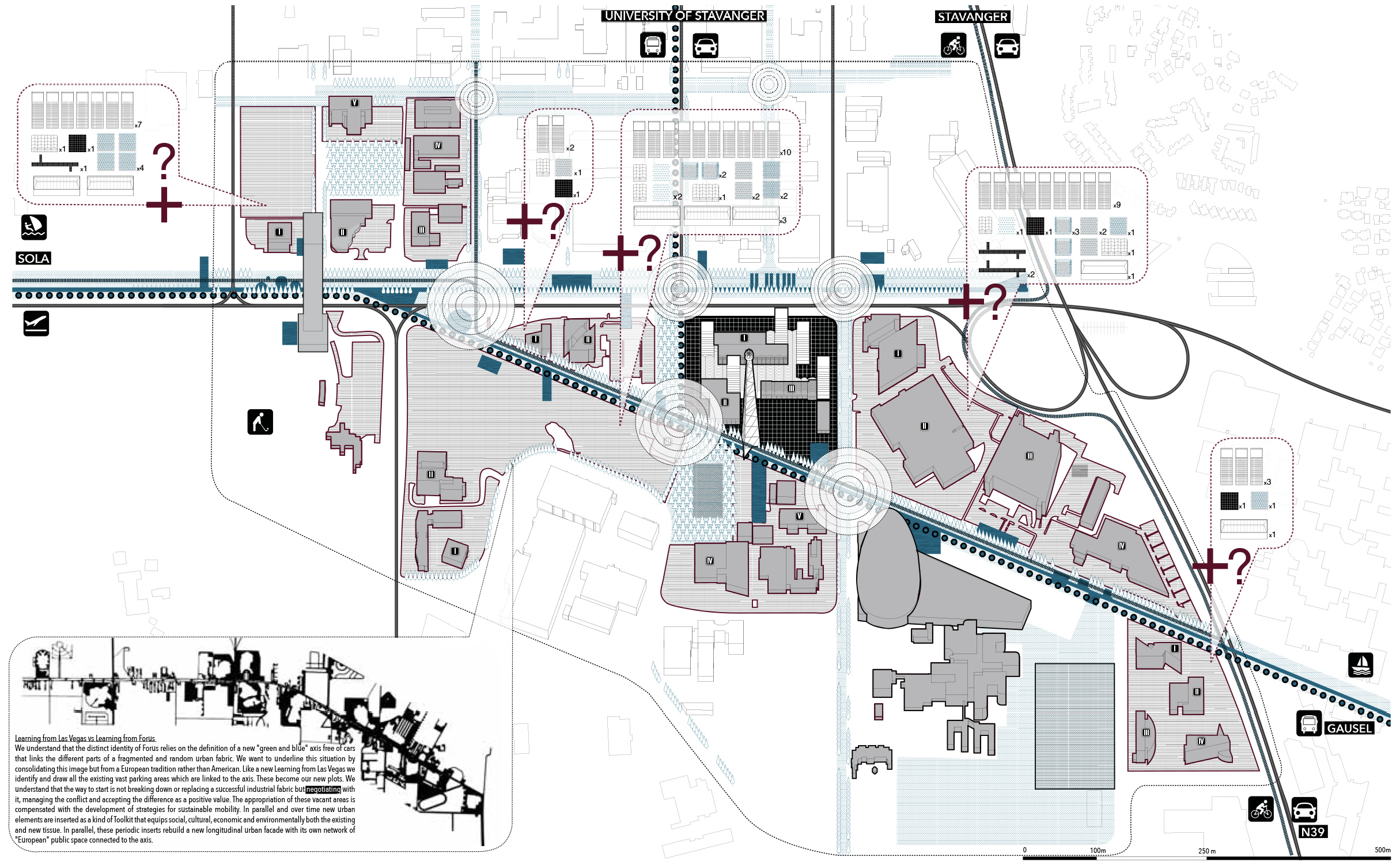
5. Today –at the era of economic crisis and sustainability– the urban-architectural project should reconsider its production method in time; how did you integrate this issue in your project?
As we have stated before we really believe in the process as a powerful architectural tool. As F. Ascher stated in “Les nouveaux principes de l’urbanisme” (2004) this urban project should be developed in an uncertain context and be flexible enough to incorporate new inputs during its development; it must also finally incorporate both public and private stakeholders. These are the basic elements of this FORUS LABing.
6. Is it the first time you have been awarded a prize at Europan? How could this help you in your professional career?
This is our third first prize in Europan. We won this competition previously in Wien (Europan 7) and Stavanger (Europan 8). We really believe that this new first prize can consolidate our work in the Norwegian context. It is now almost 10 years since we have won our first prize there, so after all this time we know it pretty much better that the first time we visited Stavanger. We are really anxious to apply this knowledge in the development of this new project.
Related projects
-
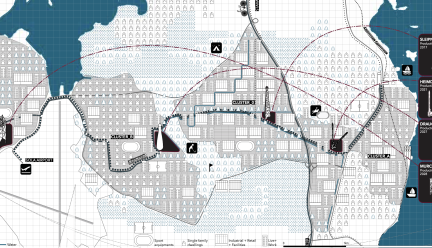
Forus LABing
Our goal is to propose a new model of society linked to a new urban model and promoted by a new…
-
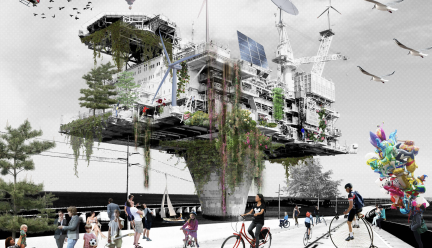
Indigo
The potential of smart place-making activities to reinforce the mixture of uses is significant in…
-
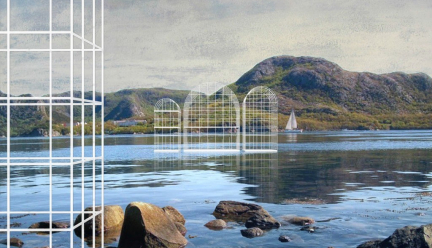
Rise Of Nature
A basis for the future of the Green Axis based in nature, clean technologies, agriculture, rural…
